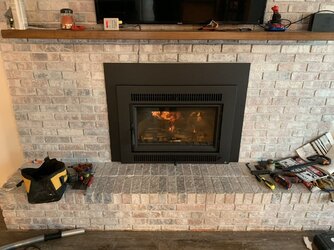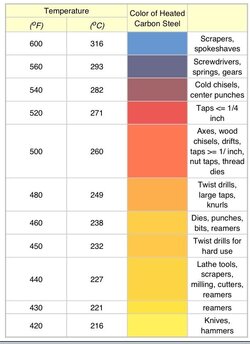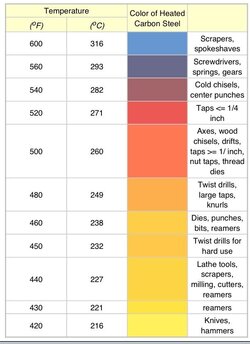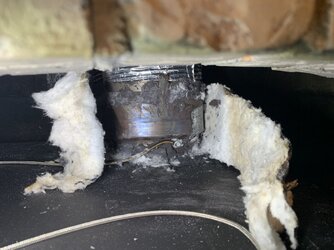I’m getting used to operating this insert and have some questions. I have a washer probe for my at200. With a full load of elm on a warm stove I am seeing 900-1080 degrees at the appliance connector with the air shut down all the way.
My start up is as follows, load on coals, door,air,bypass open until wood catches fire. Shut door and run until about 250 degrees, close bypass. Run until about 400-500 degrees wood is starting to really off gas, crank air back to almost closed about 80%. At 600 close the air all the way. Temp slowly rises as secondaries start to warm up and take off. Around 800 degrees baffle and secondaries start to glow and are really putting in the work. Temp will continue to climb until its ready to stop(some where between 900-1080 so far). With air all the way down you can see secondary combustion flames wrapping around the baffle and running a little up the insert exit( you can see the flames through the bypass rod hole)
I know the bypass sits fully shut as it was visible before liner install.
After the wood out gas slows down temps will creep down to a comfortable 700 and slowly drop as wood is consumed.
The wood is 2 year old siberian elm, some random dead wood that feels a little light and saw dust bricks to fill the gaps.
Insert is brand new Lopi large flush, 6 inch insulated liner 15ft tall chimney. I haven’t seen any glowing on the stove and ir readings through the face plate (if it’s accurate) haven’t been higher than 650.
I plan on moving the sensor as up the liner ss as possible should be about 10 inches from the exit I think.
Any insight on this?
My start up is as follows, load on coals, door,air,bypass open until wood catches fire. Shut door and run until about 250 degrees, close bypass. Run until about 400-500 degrees wood is starting to really off gas, crank air back to almost closed about 80%. At 600 close the air all the way. Temp slowly rises as secondaries start to warm up and take off. Around 800 degrees baffle and secondaries start to glow and are really putting in the work. Temp will continue to climb until its ready to stop(some where between 900-1080 so far). With air all the way down you can see secondary combustion flames wrapping around the baffle and running a little up the insert exit( you can see the flames through the bypass rod hole)
I know the bypass sits fully shut as it was visible before liner install.
After the wood out gas slows down temps will creep down to a comfortable 700 and slowly drop as wood is consumed.
The wood is 2 year old siberian elm, some random dead wood that feels a little light and saw dust bricks to fill the gaps.
Insert is brand new Lopi large flush, 6 inch insulated liner 15ft tall chimney. I haven’t seen any glowing on the stove and ir readings through the face plate (if it’s accurate) haven’t been higher than 650.
I plan on moving the sensor as up the liner ss as possible should be about 10 inches from the exit I think.
Any insight on this?





